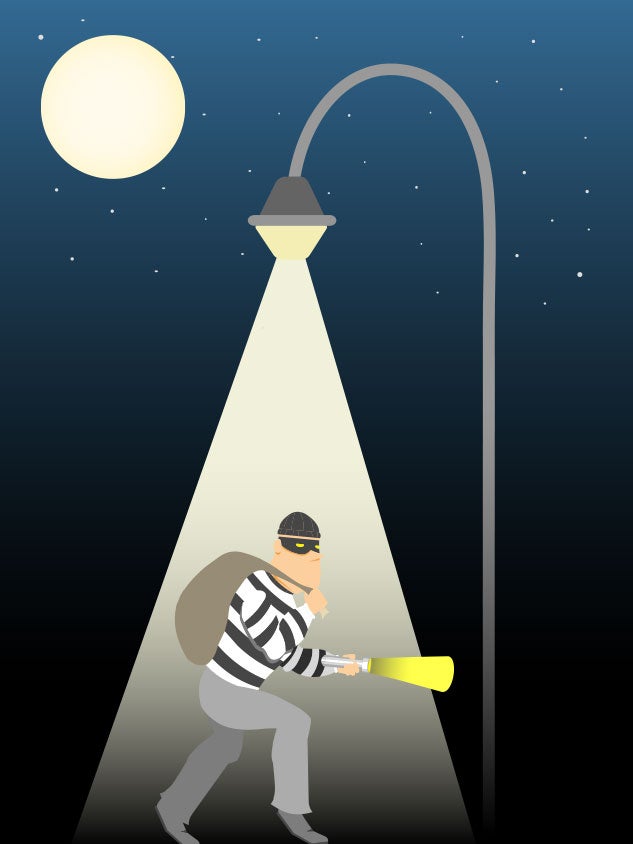Streetlights and Crime: A Mystery
Do more streetlights result in safer streets?

Fall 2017
Amy McCaig
Higher concentrations of streetlights do not guarantee fewer nonviolent crimes in Houston neighborhoods, according to a new report from Rice’s Kinder Institute for Urban Research.
The researchers compared 2015 crime rates from areas of the city with both high and low streetlight density and looked for patterns to determine if there was a relationship between these factors. Streetlight density was measured by dividing the number of streetlights in a census block by the length of road miles within the block. It ranged from a low of less than one streetlight per mile of road to a high of 47 streetlights. The city of Houston’s average streetlight density is about 15 streetlights per mile of roadway. There are 173,000 streetlights overall.
The report revealed that crimes occur throughout the city in areas with both high and low concentrations of streetlights. However, the researchers found no direct correlation between higher densities of lights (more than 15 streetlights per mile of roadway) and lower rates of nonviolent crimes. In fact, areas with higher densities of lights experienced 60 percent more nonviolent crimes on average than areas with low concentrations of streetlights (fewer than 15 streetlights per mile of roadway). Nonviolent crimes are defined as those that do not involve the use of any force or injury to another person.
“Our model estimates that on average, irrespective of racial/ethnic composition, neighborhoods with about one light per 100 feet experienced lower crime rates than those neighborhoods with two lights per 100 feet,” said Julia Schedler, a graduate student in statistics at Rice and one of the paper’s authors. “We did not find evidence of a clear relationship between streetlight density and violent crime.”
Schedler said a common misconception is that greater densities of streetlights automatically equal safer neighborhoods. “This is not to say that streetlights are not helpful,” she said. “But streetlights alone do not reduce crime.” Future work in this area will focus on studying other factors that may affect crime, such as property values, median household income and proximity to commercial areas.
